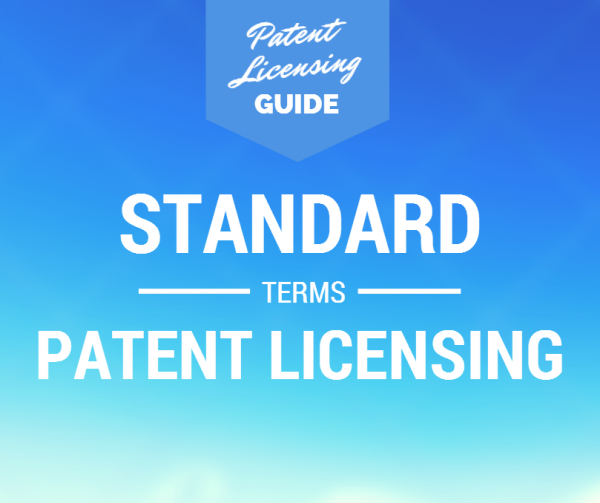Standard Licensing Agreement Terms

Do you feel like you are throwing darts trying to come up with reasonable terms and performance obligations for your patent license agreement? If so, there is no need to panic. Patent licensing is an established field with standardized terms and considerations that you can use as benchmarks. In this article, we will walk you through some of the standard licensing agreement terms and offer tips on applying them to your own unique situation.
The first thing you need to decide is whether your patent license will be an exclusive or non-exclusive license. An excellent article called “Patent Licensing” explains the difference between each type: and which one your licensee is probably going to want:
“A patent license is a waiver by the licensor of the right to exclude the licensee from practicing under the patent rights. Licensees would prefer to obtain an exclusive license if possible. In addition to the commercial disadvantages of a non-exclusive license, a non-exclusive licensee acquires no affirmative rights with respect to the enforcement of the licensed patents. Unless the non-exclusive license specifically provides some protections, the licensor has no duty to protect the non-exclusive licensee’s interests in the event of patent infringement, abandonment of the patent, or other licensee’s with better terms.”
SRC: http://www.zeromillion.com/entrepreneurship/patent-licensing.html
Standard Licensing Agreement Terms to Avoid
Once you have settled the matter of exclusive vs. non-exclusive, you will move on to what performance obligations and requirements get written into the license. There is one clause, however, that you should avoid: the generic “best efforts” clause. The article continues:
“Both parties should avoid this clause in favor of more objective standards. The courts may interpret such a clause to require the dedication of all of the licensee’s resources towards exploitation of the licensed patents, when realistically most licensees will have a number of other significant business endeavors to support.”
Fortunately, there is a better way to ensure that your licensee performs on a high level: specific, numeric performance obligations. The idea is that you want each party’s responsibilities to be crystal clear, unmistakable, so that they can be enforced. For instance:
For example, the licensee may be required to obtain an approved New Drug Application with the Food and Drug Administration by a certain date. Licensees should be aware that there is an implied obligation to exploit the licensed patent on the part of an exclusive licensee.
An obligation like this is very specific. If it is not met, you as the licensor will have the right to revoke the patent if you feel that is warranted. Of course, you will need to tailor the performance obligations in your contract to your own needs and desires. You may decide to give your licensee more relaxed terms, say, if you are close friends or longtime business partners. The choice is really between you and your licensee.
But how should you set those obligations? This is where many patent holders stumble and feel that they are shooting in the dark. Fortunately, it does not have to be this way. There are 2 main benchmarks that you can use in setting performance obligations and royalty requirements.
1) Your costs up until this point
Whatever you have paid to patent your idea, document it, advertise it, and bring it to life should be factored into what you expect out of your licensing agreement. After all, you want to recoup those costs, and profit some, besides. That’s the whole point of licensing the patent in the first place.
2) How much you are making from the patent
If you are already capitalizing on the patent, you should aim to replace and exceed that income with your license agreement. For example, let’s say you created a product based on your patent and are earning X dollars a month from it. If you want to grant someone an exclusive license to take the reins and capitalize on your patent, you should be getting X + something from the agreement. Otherwise, why not just keep exploiting your own patent yourself? If you are going to introduce a middleman (the licensee), it had better be worth your while.
Discuss Your Royalty Requirements
The same goes for royalty requirements. This is when you specify “This agreement must provide me with X dollars monthly, annually, or semi-annually, regardless of where it comes from.” Here, too, you want the amount to compensate you for what you have already spent or what you are already earning. The way to avoid the “throwing darts” feeling is to run the numbers and set your royalty requirements based on those.
As you can see, the key to a license agreement based on numbers instead of guesswork is to assess your own unique situation. While the basic framework of patent licenses is standardized (exclusivity, performance obligations, term lengths, etc.), the exact manifestations are up to you and your licensee to hammer out amongst yourselves. Have questions? Contact us.